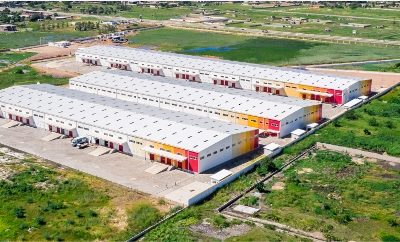At a time when cost control has never been more important, Andrew Cruise, managing director, Routed, says that many businesses continue to under-estimate the costs for owned infrastructure. He cites the main reasons to be the inability to apportion shared costs correctly as well as the inability to value risk and business agility.
“It is trivial to cost infrastructure initially by looking at the capital expense of purchasing or financing the hardware, and sometimes software. These are usually individual line items in an Income Statement or Ledgers on a Balance Sheet, easy to audit and ascertain,” says Cruise.
Digging deeper, he says that these costs are augmented by costs of the server room estate, power, cooling, security, and operating expenses such as human resources: “Often these items are bulk line items in a business’ income statement e.g. power, cooling, rent. In terms of human capital, invariably the resources have multiple responsibilities including infrastructure administration and management and it’s difficult to separate out the infrastructure costs.”
To audit these costs, businesses need to identify all contributing costs to the infrastructure and separate out the shared costs in a reasonable manner, according to Cruise. He says that it is also possible that some costs are just not borne by the business, which in this case increases the operational risk such as lack of security or understaffing – all of which make it too difficult to value.

If a business collocates in an outsourced data centre rather than running their own, these costs, too, are easy to ascertain. But even if they do not, colocation costs are freely available and can be used as a guide to the borne cost and accepted internalised risk.
In the case of how to get a handle on the costs and the unchecked spread of cloud shadow IT, Cruise says that both are typically deployed without explicit approval and are thus outside the control of the IT department: “Usually this refers to departments utilising hyperscale cloud providers without central management. The costing of this should be relatively simple as the invoices need to be discovered and aggregated. But ultimately, if a Cloud migration is formally undertaken, the need for Shadow IT recedes and all of these costs should be folded into the whole project.”
Month end ‘bill shock’ from the hyperscale cloud providers has been well documented, however many of the hidden costs are now known: “It may be a challenge to get a grip on both shadow IT and costs from hyperscalers, it is tricky at best but not impossible.”
He says that what is less understood is the cost of ‘stickiness’ or being captive in any one particular cloud: “The hyperscale cloud providers differentiate by offering specialist functions and services, which businesses begin to rely on and can hold them hostage in the long run. There are alternatives when it comes to infrastructure: “VMware Cloud, typically offered by local cloud providers, is available even in the hyperscale cloud provider data centres, and provides a standard infrastructure operating environment, which facilitates seamless workload mobility.”
Cruise says that vastly different risk appetites will impact the overall budget: “Often, a logical path is to initially migrate workloads to a similar infrastructure i.e. a VMware Cloud, because it is a simple, cost effective and efficient migration, and then segregate workloads where retooling or rearchitecting is a suitable option using hyperscalers for a mixed hybrid cloud solution. This is what I call the pragmatic cloud.”
He says that while most hyperscalers offer tools to calculate costs there is a new breed of Cloud Management Platform, such as CloudHealth, which can aggregate all cloud usage and provide not only a total spend, but recommendations for improving cost efficiency.
Aside from using the correct tools, Cruise says that process is key: “Businesses have to know what is being ordered, provisioned, utilised; who has authority to sign off on these purchases; and an audit trail that can be used to identify and control all costs.”































